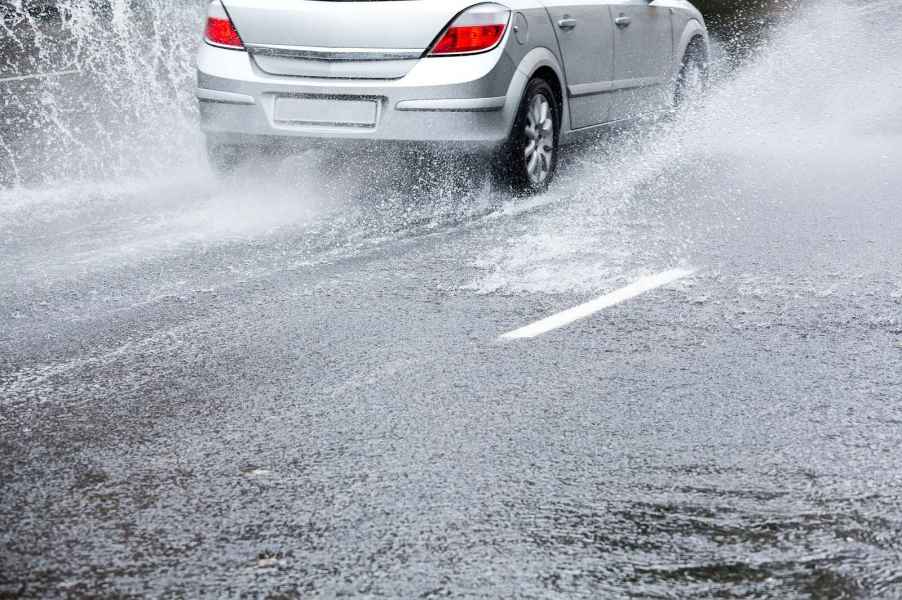
‘Aquaplaning’ Is Accidental Drifting – and It’s Way More Dangerous Than We Think
Aquaplaning, or hydroplaning, is a perilous situation where water gets between the road and your car’s tires. This loss of traction can cause some serious gliding, similar to drifting. In these cases, though, no one is a professional driver. As such, it’s easy for hydroplaning vehicles to crash.
In fact, according to the Federal Highway Administration, wet pavement is responsible for nearly 75% of weather-related car accidents annually. It gets worse: more than 5,000 people are killed and more than 544,000 people are injured in crashes on wet pavement each year. Inside that stat, we suffer through more than 3,400 fatalities and over 357,300 injuries from car accidents while it’s raining.
Here are four easy tips to help you avoid hydroplaning and what to do if you feel like you’re losing control on a wet road.
Check your tires
Your tires are your first line of defense against aquaplaning. Make sure they have adequate tread depth to channel water away from the tire. Keep your tires properly inflated to ensure maximum contact with the road.
Replace your wiper blades
Worn-out wiper blades can leave streaks and reduce visibility, making it harder to see puddles and other hazards. Check your wiper blades every few months and replace them at least once a year or sooner if they start to leave streaks.
Recognize hydroplaning conditions
Be aware of the road conditions that can lead to hydroplaning. Heavy rain, especially when it first starts, can create a slick surface as oil and grime mix with water. Avoid driving through large puddles and standing water, and reduce your speed in rainy conditions. Driving too fast on wet roads increases the risk of hydroplaning.

Drive smart on wet roads
Slow down and give yourself more time to react to traffic. Increase the distance between you and the car in front of you to avoid sudden stops. Avoid using cruise control, as it can prevent you from responding quickly to changes in road conditions.
What to do if you start to hydroplane
If you start to hydroplane, stay calm. Take your foot off the gas. Steer straight until you regain traction. It helps to find a focal point so you don’t get distracted.
Don’t slam on the brakes. Turning the wheel in one direction or another can actually cause you to spin out.
Overall, properly maintaining your car’s tires and wipers, being aware of risky road conditions, and knowing how to handle aquaplaning all go a long way in staying safe while driving in wet weather.



